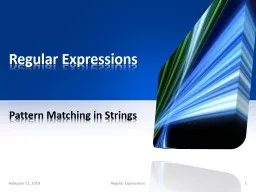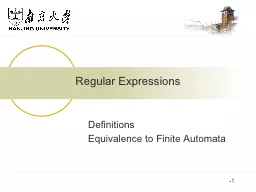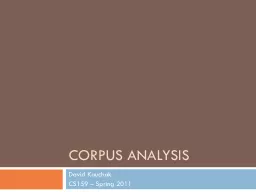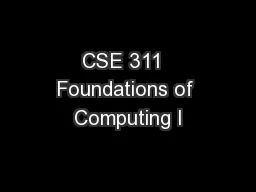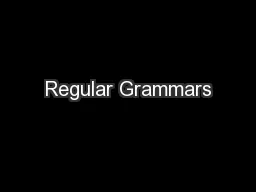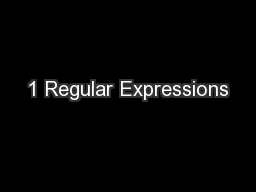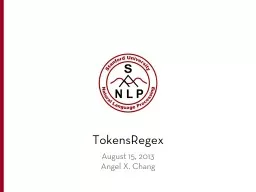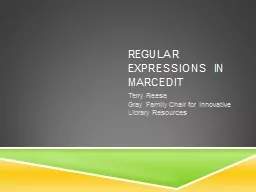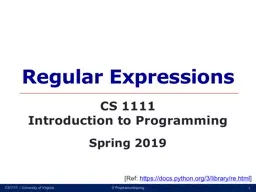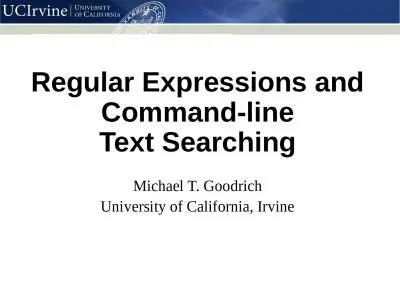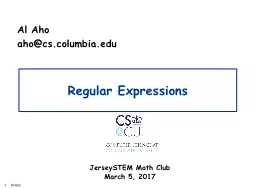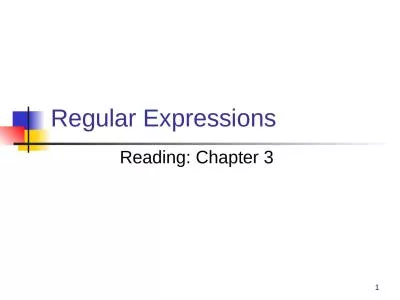PPT-Regular Expressions
Author : karlyn-bohler | Published Date : 2019-11-06
Regular Expressions Pattern Matching in Strings February 13 2019 Regular Expressions 1 More about strings In a previous lecture we discussed the String class and
Presentation Embed Code
Download Presentation
Download Presentation The PPT/PDF document "Regular Expressions" is the property of its rightful owner. Permission is granted to download and print the materials on this website for personal, non-commercial use only, and to display it on your personal computer provided you do not modify the materials and that you retain all copyright notices contained in the materials. By downloading content from our website, you accept the terms of this agreement.
Regular Expressions: Transcript
Download Rules Of Document
"Regular Expressions"The content belongs to its owner. You may download and print it for personal use, without modification, and keep all copyright notices. By downloading, you agree to these terms.
Related Documents

